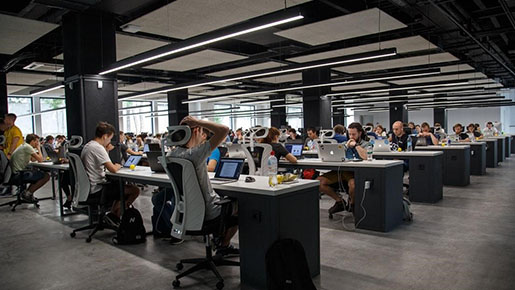
Employers have a responsibility to ensure that their workers are safe and healthy while on the job. This means creating a protected and hygienic work environment and providing adequate training. In this article, we’ll discuss how to create a safe and healthy work environment in the office.
Create And Publicize Your Health And Safety Policy
This document should be specific to your company and outline the procedures you have in place to protect your staff from hazards. Some examples of these policies could include prohibiting smoking in the workplace, requiring employees to wear protective clothing, and establishing procedures for dealing with hazardous materials. You’ll also need to decide who will be responsible for enforcing the policy.
Once you’ve produced the document, it’s important to distribute its contents to all of your employees. The policy should be communicated to all new staff, plus there should be refresher training and updates issued whenever there’s a policy change. There are many benefits to having a health and safety policy in place. It shows your employees that you’re committed to their safety and wellbeing. It can also help to reduce the number of accidents and injuries in the workplace, saving your company money.
Monitor Your Safety Equipment And Work Clothing
The safety equipment can include things like first-aid kits, fire extinguishers, and smoke detectors. By keeping these things functional and readily available, you can help to prevent accidents and injuries from occurring. Some other examples include non-slip mats, cord covers, and safety ladders. You also need to conduct regular safety training for your employees and have procedures in place for responding to accidents and emergencies.
If your staff wear uniforms or some other form of work clothing it’s important to ensure that they’re regularly cleaned. A visit to https://www.healthysole.com/ shows how hospitals, first responders, or long-term care/senior living professionals often wear shoes containing pathogen-removing soles. This reduces the contamination of high-touch surfaces, protects personnel and patients, and provides extra peace of mind.
Create A ‘Health And Safety Culture
This means that everyone in the office is aware of the importance of health and safety, and takes responsibility for their own well-being and the well-being of others. There are a few key activities you can conduct to achieve this:
- Encourage open communication about health and safety concerns. Make sure everyone knows they can raise any issues they have, without fear of retribution.
- Educate employees on health and safety risks, and how to mitigate them. This could include first aid training, ergonomics training, or fire safety training.
- Make health and safety a priority in all decision-making. For example, if you’re choosing office furniture, make sure it meets ergonomic standards to reduce the risk of musculoskeletal injuries.

Perform Regular Inspections
It’s important to perform regular inspections of the office space and identify any potential dangers. This can be done by looking for:
- tripping hazards
- cabinet drawers left open
- boxes on tops of cupboards
- loose electrical wires
- frayed carpeting
- broken furniture or equipment
If any of these hazards are found, be sure to fix them immediately. Not only will this create a safer work environment, but it’ll also show your employees that you care about their safety and well-being.
Encourage Good Hygiene Practices
This includes your staff washing their hands regularly, avoiding sick coworkers, and cleaning up after themselves in the break room or kitchen area. Employees should be encouraged to stay home if they’re feeling sick. You should ask your staff to sneeze into tissues and put their hands up when they cough. They should also avoid touching their faces, and keep their workspaces clean.
You can promote these practices by putting up posters around the office or sending out reminder emails. You could even offer prizes for employees who follow good hygiene practices.
Other Suggestions
Here are some miscellaneous tips to help you:
- Train your staff on how to lift heavy objects safely (e.g. storage boxes)
- Encourage people to get up and move around every hour or so
- Provide free eye tests for your employees
- Provide a water dispenser so your staff remains hydrated
- Invest in ergonomic office furniture
- Conduct regular workstation assessments
- Dispose of garbage efficiently
- Create designated food areas and keep them meticulously clean
You now know a little more about how to keep your work environment clean and safe. Have a disaster recovery plan in place as well, in case there is a major incident. By doing these things you’ll be respecting the lives of those you employ and also stewarding the health and safety of any customers or visitors.

